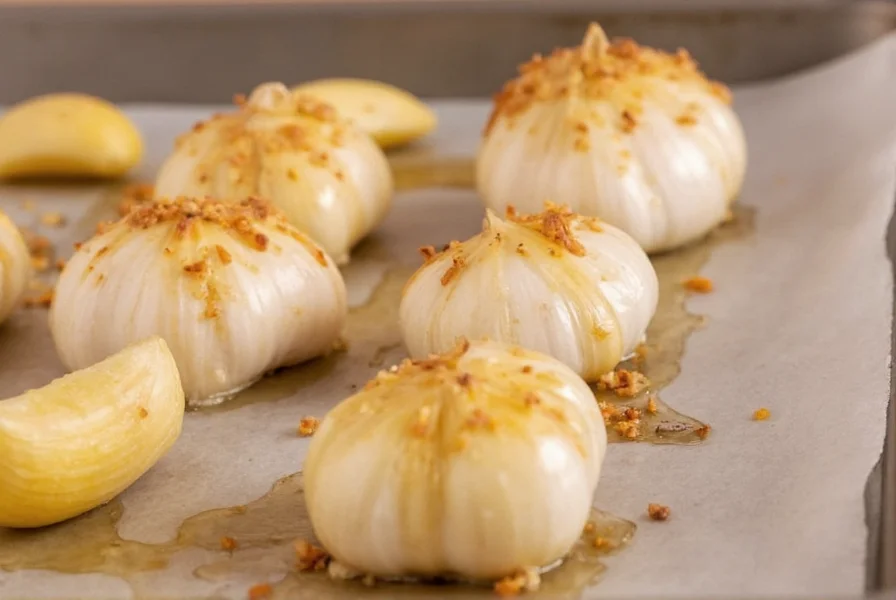Garlic transforms dramatically when roasted, turning from sharp and pungent to sweet, creamy, and spreadable. This easy method to roast single garlic clove requires minimal effort but delivers maximum flavor impact for sauces, spreads, and side dishes. Unlike boiling or frying, oven roasting preserves garlic's beneficial compounds while creating that signature caramelized taste.
Why Roast Just One Clove?
While many recipes call for roasting entire heads of garlic, sometimes you only need a single clove for a small batch of dressing, a personal portion of mashed potatoes, or a quick flavor boost. The perfect oven roasted garlic technique for individual cloves prevents waste and gives you precise control over doneness.
What You'll Need
- 1 garlic clove, peeled
- 1/2 teaspoon olive oil (or avocado oil)
- Small piece of aluminum foil
- Baking sheet
- Oven preheated to 400°F (200°C)

Step-by-Step Roasting Instructions
- Prepare the garlic: Remove the papery skin from your garlic clove. For easiest peeling, slice a thin piece off both ends first, then squeeze the clove from the bottom up.
- Oil the clove: Place the peeled clove on a small square of foil (about 6x6 inches) and drizzle with olive oil. Gently roll the clove to coat evenly.
- Seal the packet: Fold the foil over the garlic and crimp the edges to create a tight, sealed packet. This traps steam for even cooking.
- Roast: Place the packet on a baking sheet and bake at 400°F (200°C) for 15-20 minutes. Check at 15 minutes by carefully opening the packet.
- Test for doneness: The garlic is ready when it's soft enough to mash with gentle pressure and has turned golden (not browned).
Pro Tips for Perfect Results
Master the best temperature for roasting garlic with these professional insights:
| Factor | Recommendation | Why It Matters |
|---|---|---|
| Temperature Range | 375-425°F (190-220°C) | Lower temps require longer cooking but reduce burning risk |
| Timing | 15-25 minutes | Smaller cloves cook faster; check early to prevent over-roasting |
| Oil Type | Extra virgin olive oil | Enhances flavor and prevents drying without smoking |
| Doneness Test | Soft texture, golden color | Browning indicates burning; garlic should mash easily |
Avoid common mistakes with these tips:
- Don't skip the foil - Roasting directly on a pan causes uneven cooking and potential burning
- Resist peeking too early - Opening the packet releases steam needed for proper softening
- Adjust for oven variations - Convection ovens may require 25°F lower temperature
- Try flavor enhancements - Add a pinch of salt, thyme, or lemon zest to the oil for extra dimension
Culinary Uses for Your Roasted Garlic
Now that you've mastered how to tell when garlic is roasted perfectly, put it to work:
- Spread on crusty bread or crackers
- Mash into softened butter for garlic herb compound butter
- Blend into salad dressings or mayonnaise
- Stir into mashed potatoes or roasted vegetables
- Add to soups and sauces for depth without sharpness
Troubleshooting Common Issues
Even with the simple garlic roasting instructions, problems can occur:
Garlic is Burning
If your garlic browns too quickly, your oven temperature may be inaccurate. Use an oven thermometer to verify. Next time, reduce temperature to 375°F (190°C) and extend cooking time by 5 minutes.
Garlic Remains Hard
Under-roasted garlic stays firm and retains its raw bite. Return to oven in the foil packet for additional 5-minute increments until soft. Smaller cloves sometimes cook unevenly - rotate the packet halfway through cooking.
Lack of Flavor Transformation
If your roasted garlic still tastes sharp, it likely wasn't cooked long enough. Properly roasted garlic should have a sweet, nutty flavor. Increase cooking time by 5-10 minutes next attempt while monitoring closely.










 浙公网安备
33010002000092号
浙公网安备
33010002000092号 浙B2-20120091-4
浙B2-20120091-4